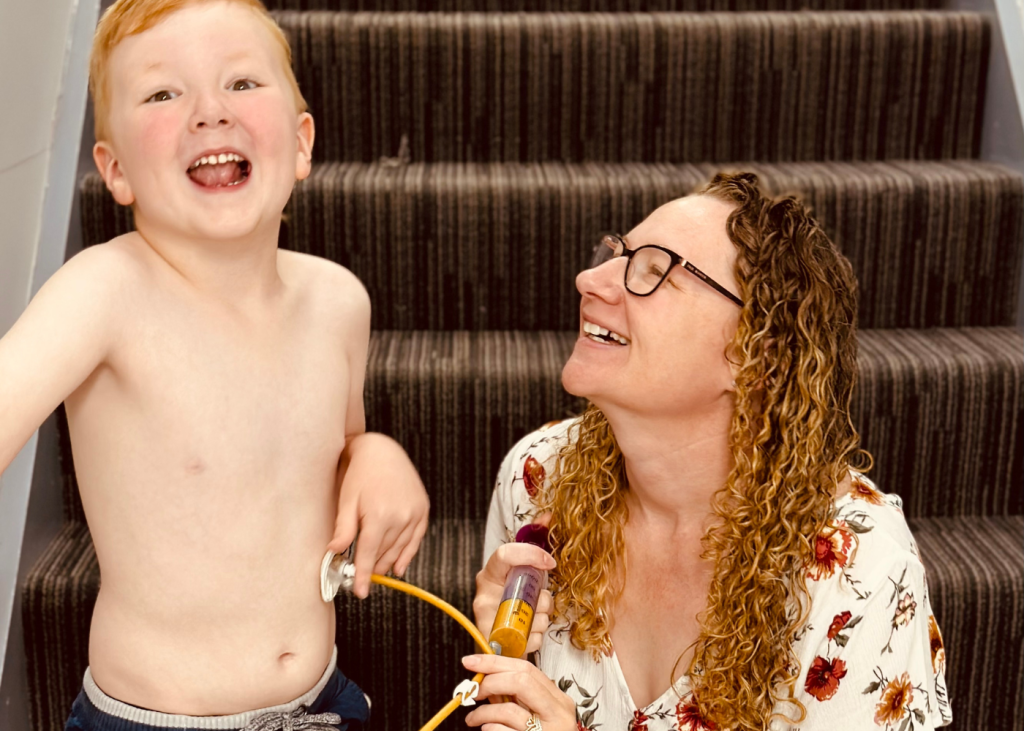We talk to two mums about their children’s tube feeding journeys and the ways they are giving back to the tubie community.
Stacey Phillips has tube fed one of her sons since he was nine weeks old and is on a mission to brighten up the lives of those in a similar situation.
Queensland-based Stacey and her husband Anthony have three sons – Isaac, Harry and Callum. Callum lives with a number of diagnoses – he has low tone which causes him issues with swallowing, core strength and fine motors skills and also has laryngomalacia and tracheo-laryngomalacia, dysphagia and hyperphasia. He also had central apnoeas as a baby and was on home oxygen for about 18 months.
“When Callum was a baby he had a lot of trouble with breathing and would stop breathing suddenly,” Stacey recalls.
“He was always very hard to feed and he would always struggle to finish his bottle or it would take us an incredibly long time to do so.
“When he was 9 weeks old we discovered he was aspirating due to multiple issues but most predominantly due to his floppy airway which he then had surgery on to repair and a tube inserted for feeding.”
Stacey recalls the experience as scary and confronting.
“We knew there was something wrong but we really struggled to find help for him or someone to take us seriously,” she says.
“Once we met an amazing, understanding paediatrician, everything changed. We were admitted to hospital during our appointment and four days later he then had airway surgery.
“We went on to have multiple surgeries and investigations to try and find answers. All up we spent the first 6 months’ of Callum’s life in hospital.
“When we came home, it was an adjustment for the whole family. We had to find a new routine and a way to explain to our boys that Callum will have his tube for quite some time.
“We eventually found our groove and adjusted our lives and the rest is history.”
Stacey is making history of her own – she won the AusMumpreneur Handmade Business Award for her business Tubie Fun, which she started in 2017 following a hospital admission.
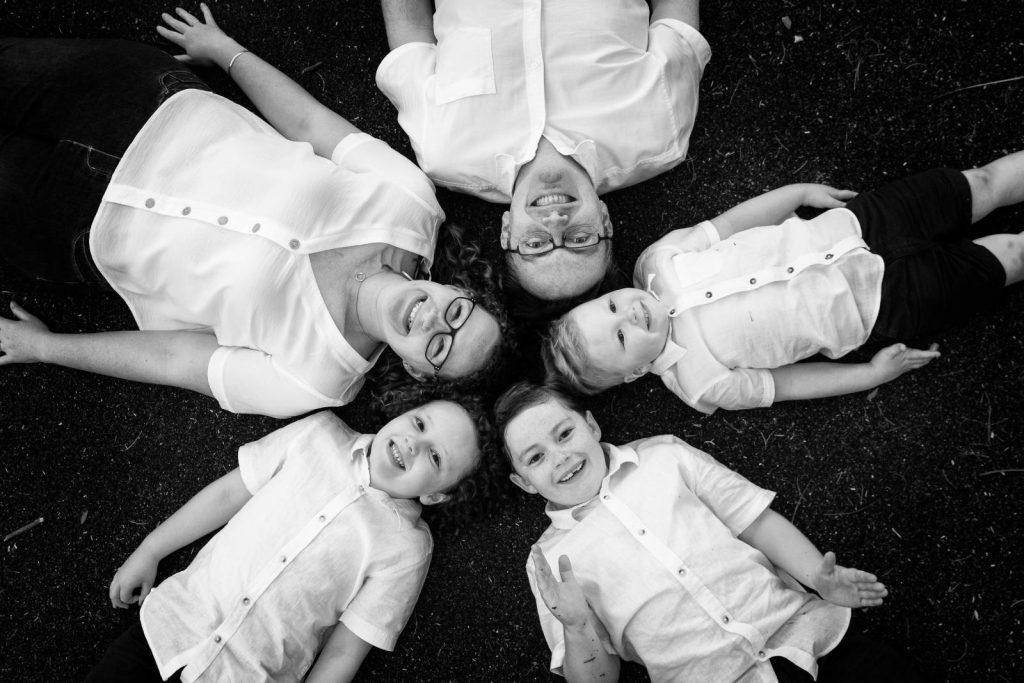
“We had just come home from another scary, long hospital admission in which Callum had complications from having his feeding tube placed.
“Every night I would research his symptoms and try and find a diagnosis for him. Eventually, I knew I just needed a break and so I decided to sew some button pads (to cover the feeding tube) to help take my mind of things.
“Eventually friends asked me to make them and then others did as well. I thought if I helped a few people I’d try and help a few more.”
Stacey’s on-line store now sells a range of colourful hand-made kids products to support their feeding journey.
“We are very lucky to have such a supportive community who love our products. I now work almost every day to try and fulfil orders as quickly as possible.
“I think there is something about people buying from someone who also understands what this special needs journey really is like.”
Stacey says that the hardest part about tube feeding is inclusion.
“A lot of people don’t understand the process of feeding or think it can have limitations on what he can and can’t do. I think it scares a lot of people as well as they just don’t see it around.
“Most people have no idea Callum has a feeding tube until it needs to be used as it’s mostly hidden under his clothes. His party trick is to run around lifting his shirt up to show people and most people are either terrified or happy to ask him all about it.
“Everyone who is tube fed deserves to feel just as special as everyone else. I’d love to have more inclusion surrounding tube feeding. Fed is definitely best, no matter what it looks like.”
Being a single mother and having young twin boys would be a test of survival for many a person.
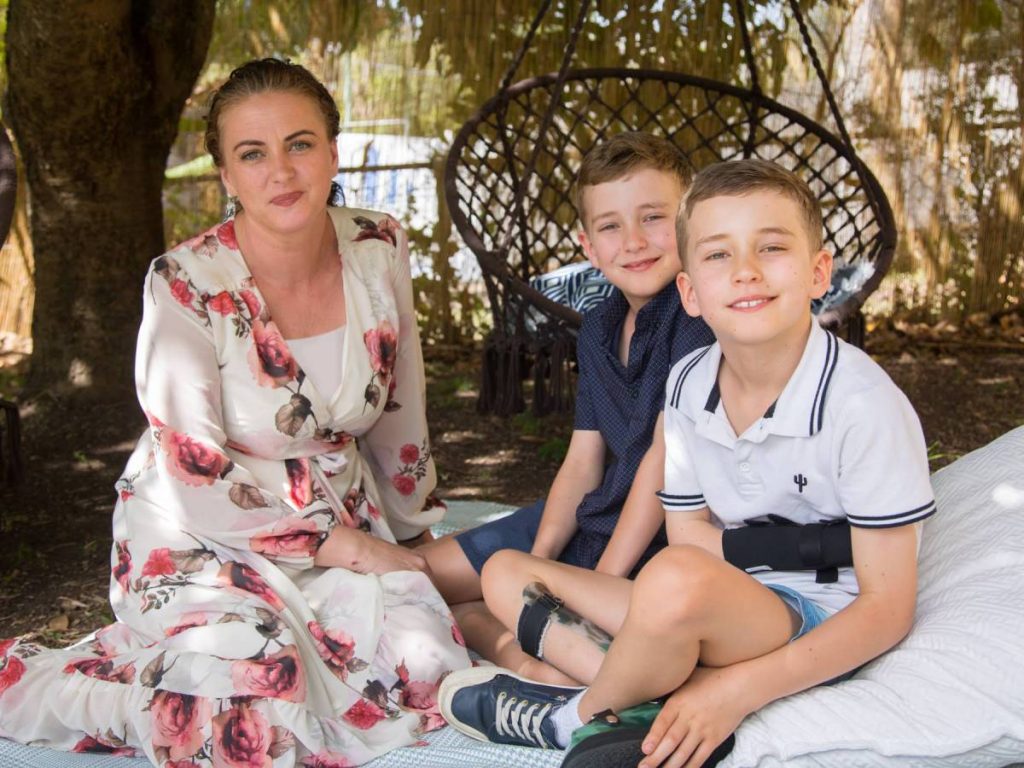
Add in a paediatric stroke and tube feeding and then you would be walking in the shoes of Sarah Thomas.
The Queensland mum has 12-year- old identical twins Cohan and Lewis, who suffered a cerebral haemorrhage when he was three, resulting in a stroke and cerebral palsy.
“Our world was tipped upside down, there is no other way to describe it,” Sarah recalls.
“We were living in a rural area at the time so were airlifted to hospital and had to stay in Ronald McDonald house. The generosity of strangers was incredible, I had no idea this community existed and I’m so proud to be part of it.”
Sarah says that Lewis’ initial diagnosis was drastic.
“Like many children that have a blockage of oxygen to the brain, there was a strong chance he wouldn’t survive,” she says.
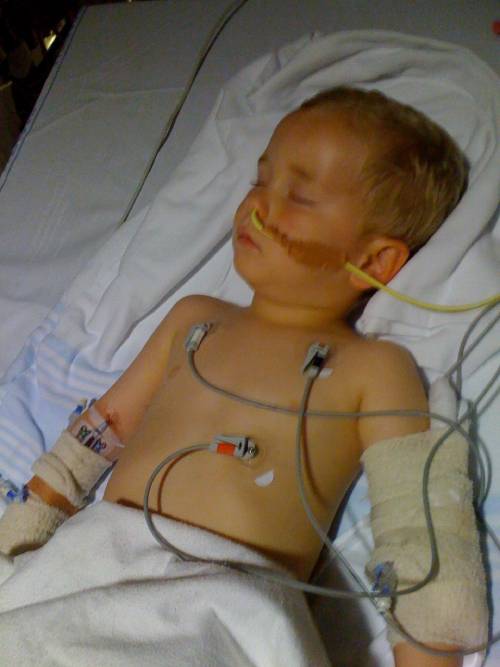
“Doctors told me that if he did live, he would never walk, talk or eat again. They said he would be severely disabled and his life would never be the same.
“While he was in hospital I realised that even though he was nonverbal, Lewis could still communicate with me. At that point I knew we would get him back and resolved to do whatever it took to make that happen. “Immediately after his stroke, I researched everything I could on his recovery. I quit my job and poured every second into his rehabilitation.
“There were times when Lewis had to be the main focus and I am so incredibly lucky and grateful for his twin brother’s generous nature. Cohan wanted him to get better as much as we did so he never felt resentful of what we were all going through, he was included in everything.
“He still has a long way to go but he has moved mountains already.” Lewis now lives with right sided hemiplegia but has relearned to walk, run, talk and can eat about 15% orally.
He is fed by a tube the remaining 85 per cent of the time – a reality that was challenging at first but has since opened up new business opportunities for Sarah.
“I doubted my abilities a lot in the beginning. I knew nothing about enteral feeding, but I did know a lot about nutrition,” she explains.
“I researched as much as I could about healthy nutrition for tubies and I was very lucky Lewis was able to tolerate everything. It was also very handy having an identical twin to see what portions he should be consuming daily.”
Sarah quickly became frustrated about the origin and cost of the food she needed for Lewis.
“The only option available was from America and not financially achievable for our family,” she admits.
“I couldn’t understand why no-one was doing this locally, when Australia is blessed with an amazing range of fresh foods.
“I was determined to give Lewis nutritious, real food and the only way I could do that was to make it myself. Once I started, I realised that what I was doing could help others.”
And so, after two years of trial and error, Wholesome Blends was born.
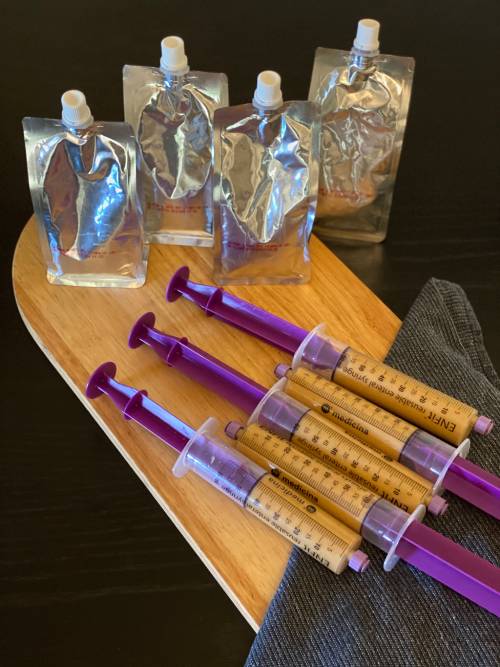
“Finding a way to make the blends took a very long time. I was determined not to compromise on my goal of all-natural ingredients. I developed recipes with a friend of mine who is a qualified chef with a degree in Nutritional Science. I also consulted with an amazing dietician who supports blended diets for tubies.
“My manufacturers have been fantastic. Trying to explain to them that taste wasn’t something we needed to consider took them by surprise, no one had ever wanted that from them before!”
“Consistency and nutrition are the two main areas that I focus on. The blends have a one-year shelf life and do not need to be refrigerated. This was really important to me as well, coming up with a feeding solution that was convenient and would make a carer’s life easier, not harder.”

